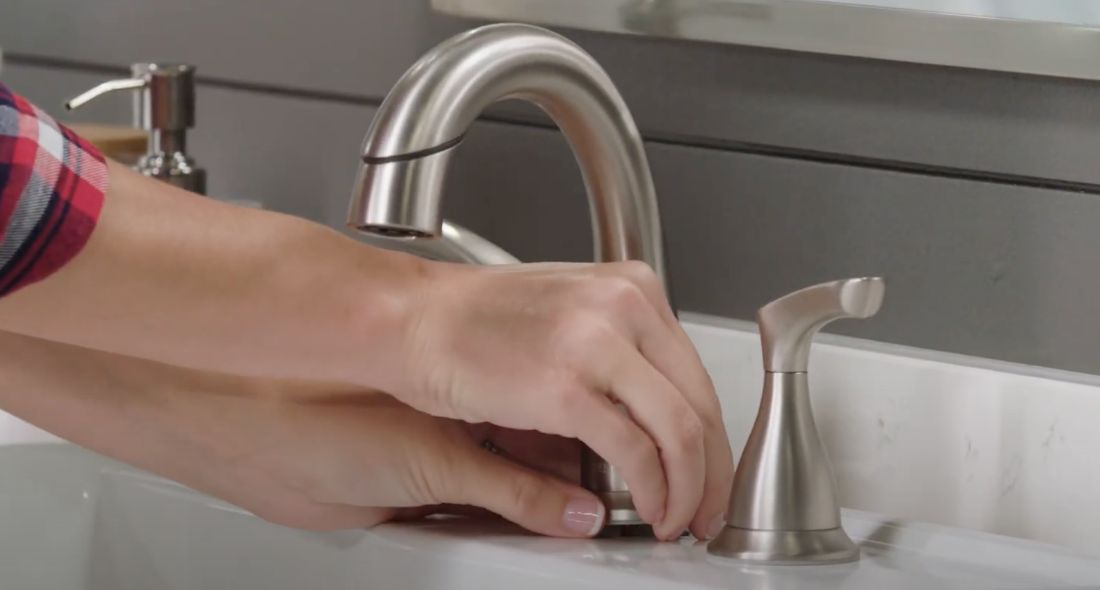Are you looking for content around Should I Repair or Replace a Leaky Faucet??
:strip_icc()/102381732-65d6e627c4de46be858c8348a7cf889e.jpg)
Trickling taps could feel like a small aggravation, yet their influence surpasses simply the nuisance of the noise. From wasting water to sustaining unnecessary financial prices and health and wellness dangers, neglecting a leaking faucet can bring about different consequences. In this article, we'll look into why it's important to resolve this common house issue without delay and successfully.
Wastage of Water
Ecological Impact
Leaking taps contribute dramatically to water wastage. According to the Epa (EPA), a single faucet trickling at one drip per second can squander greater than 3,000 gallons of water each year. This not only stress water sources yet additionally affects ecological communities and wild animals depending on them.
Financial Prices
Raised Water Bills
Beyond the ecological influence, dripping taps can inflate water costs substantially. The collected wastage over time translates into greater energy expenditures, which can have been stayed clear of with prompt fixings.
Possible Property Damages
Additionally, extended dripping can bring about damage to fixtures and surface areas bordering the faucet. Water buildup can trigger staining, deterioration, and even architectural issues if left neglected, resulting in added repair work prices.
Wellness Issues
Mold And Mildew and Mildew Development
The consistent presence of wetness from a trickling faucet produces an ideal atmosphere for mold and mildew and mold growth. These fungis not just endanger indoor air quality however additionally pose health risks, especially for individuals with breathing problems or allergies.
Waterborne Illness
Stagnant water in dripping faucets can become a breeding ground for bacteria and various other virus, raising the threat of waterborne illness. Pollutants such as Legionella microorganisms prosper in stagnant water, potentially leading to significant health problems when ingested or breathed in.
Do it yourself vs. Professional Fixing
Benefits and drawbacks of DIY Repair
While some might try to repair a dripping tap themselves, DIY repair work come with their own collection of difficulties. Without correct understanding and devices, DIY efforts can exacerbate the problem or lead to incomplete fixings, prolonging the trouble.
Benefits of Employing a Specialist Plumber
Working with a professional plumber guarantees that the underlying root cause of the trickling tap is addressed efficiently. Plumbing technicians have the expertise and devices to identify and repair faucet issues efficiently, saving time and minimizing the threat of more damages.
Step-by-Step Guide to Fixing a Dripping Faucet
Devices Called for
Before attempting to deal with a trickling faucet, collect the needed tools, consisting of a flexible wrench, screwdrivers, substitute parts (such as washing machines or cartridges), and plumber's tape.
Common Tap Issues and Their Solutions
Identify the sort of faucet and the details problem causing the drip. Typical problems consist of worn-out washing machines, corroded valve seats, or damaged O-rings. Refer to maker instructions or on the internet tutorials for detailed guidance on repair work.
Safety nets
Normal Upkeep Tips
To stop leaking faucets, do routine upkeep such as cleaning aerators, checking for leakages, and replacing damaged parts immediately. In addition, consider setting up water-saving tools or upgrading to much more reliable components.
Significance of Prompt Fixes
Addressing dripping taps as soon as they're discovered avoids further water wastefulness and possible damage, eventually conserving both water and cash in the future.
Impact on Residential Property Worth
Assumption of Well-Maintained Property
Keeping a home in good condition, including addressing upkeep concerns like leaking faucets, boosts its regarded value and value amongst possible purchasers or tenants.
Impact on Resale Value
Characteristics with well-kept plumbing components, consisting of faucets, command greater resale values in the realty market. Dealing with trickling faucets can add to a positive perception throughout property assessments and arrangements.
Environmental Duty
Individual Contribution to Preservation
Taking duty for fixing leaking taps straightens with broader efforts toward water preservation and environmental sustainability. Every individual's actions jointly make a considerable influence on maintaining priceless sources.
Lasting Living Practices
By focusing on prompt repairs and adopting water-saving habits, individuals add to sustainable living practices that benefit both existing and future generations.
Verdict
Resolving a leaking faucet goes beyond plain ease; it's a crucial action toward conserving water, lowering monetary expenses, and protecting wellness and building. Whether with DIY fixings or expert assistance, acting to fix trickling faucets is a little yet impactful way to advertise accountable stewardship of sources and contribute to a healthier, more sustainable future.
How to Fix a Dripping or Leaky Faucet
A leaking faucet is one of the most common problems that homeowners encounter, but it being commonplace doesn’t make it any less annoying. The constant drip drip drip of a leaking bathtub faucet, showerhead, or sink tap can disturb your home’s serenity. Left neglected, a dripping faucet can also result in higher water bills and discoloration or mold growth in your sink or plumbing fixtures.
Fortunately, you don’t have to be a trained plumber to know how to stop a dripping faucet. With some basic tools, replacement parts, and a little patience, leaky faucet repair is a breeze. In this article, we’ll explain what causes dripping faucets and how you can fix them.
What Causes a Leaking Faucet?
Kitchen and bathroom faucets come in all manner of designs, but most involve some combination of valves, O-rings, seals, and washers. The O-ring is usually the weakest link, but any one of these pieces can wear down over time. Heat, moisture, temperature fluctuations, minerals, mold, and movement can contribute to warping and corrosion, breaking the watertight seal. This just comes with the territory of being a homeowner. Everything is always subject to wear and tear, and some component parts of your appliances and fixtures need to be replaced on occasion. At least replacement O-rings are cheap!
More rarely, dripping faucets can be a symptom of excessively high water pressure. Were this the case in your home, you would probably notice that the leak is not isolated to one faucet. Water pressure issues are harder to resolve on your own. We recommend contacting a professional plumber if you suspect your water pressure is too high.
How to Fix a Dripping Faucet
Pipe wrench or monkey wrench Allen wrench set Screwdrivers Old towel or rag Shut off the water.
Before you do anything, you need to turn off the water to keep from drenching your kitchen or bathroom. You should find a valve under the sink and against the wall. Once you’ve turned this valve, try turning the faucet on to confirm that the water source has been cut off.
If you can’t locate your local valve for the faucet you’re working on, you can always shut off the water to the house at the main valve. Of course, this will prohibit anyone from using the sinks, showers, or toilets while you’re working on the faucet that’s giving you trouble.
Plug or block the drain.
You’ll be disassembling the faucet and removing some small bits of hardware. Plug the drain with a stopper or rag to avoid the possibility of a small screw falling into your P-trap.
Take apart the faucet assembly.
There are several varieties of kitchen and bathroom faucets, each with its own manner of assembly. For detailed instructions on how to disassemble your faucet, you can refer to the fixture’s manual or contact the manufacturer. If you know whether you have a ball, disc, cartridge, or compression faucet, you can find detailed schematics online.
In general, you need to begin by removing the faucet handles. You might notice a small screw that you’ll need to remove with a screwdriver or Allen wrench. If you don’t see any visible securing hardware, it’s likely hidden under a decorative cap that can be unscrewed or popped off with flathead screwdriver.
Remove each piece methodically, consulting a schematic when necessary. Take notes or arrange the pieces in such a way to make it easier to correctly reassemble the faucet later.
Remove the cartridge.
Once you’ve removed the handles and securing hardware, you should be able to remove the valve cartridge or stem. Some cartridges will slide right out. Other faucet models will require you to loosen a nut with a pipe wrench before you can remove the valve stem.
Examine the exposed hardware.
With the cartridge or stem removed, inspect the component parts. Check the rubber O-rings for wear and tear. Also examine the seat washer for corrosion or other damage. These pieces are usually the responsible parties for a dripping faucet, but it’s worth inspecting the other component parts while you have the faucet disassembled.
Find replacement parts.
Once you’ve identified which faucet component has failed, find an identical replacement. Your local hardware store should have O-rings, seat washers, and other standard components in stock. If you have a luxury or uncommon faucet, you may have to contact the manufacturer for a replacement part.
It’s a good idea to take your old parts with you to the hardware store so you can compare them with the store’s inventory and be sure you’re purchasing the correct replacement.
Reassemble the faucet.
With your new parts in hand, reconstruct the faucet and handles. Don’t be tempted to overtighten screws or nuts. You might think this could create a better seal, but it can instead damage or bend a delicate part of the assembly and create a new problem for you.
Turn on the water and test the faucet.
The only thing left to do is test your work. Unplug the sink, turn the water back on, and try the faucet. Congratulate yourself on a job well done!
https://www.libertyhomeguard.com/how-to-fix-a-dripping-or-leaky-faucet/

I recently found that piece of writing on Water Dripping from Faucet: Why and How to Fix when doing a search on the internet. Please take the opportunity to promote this entry if you enjoyed it. Thanks for your time spent reading it.
 Scott Baio Then & Now!
Scott Baio Then & Now! Spencer Elden Then & Now!
Spencer Elden Then & Now! Tyra Banks Then & Now!
Tyra Banks Then & Now! Daryl Hannah Then & Now!
Daryl Hannah Then & Now! Nadia Bjorlin Then & Now!
Nadia Bjorlin Then & Now!